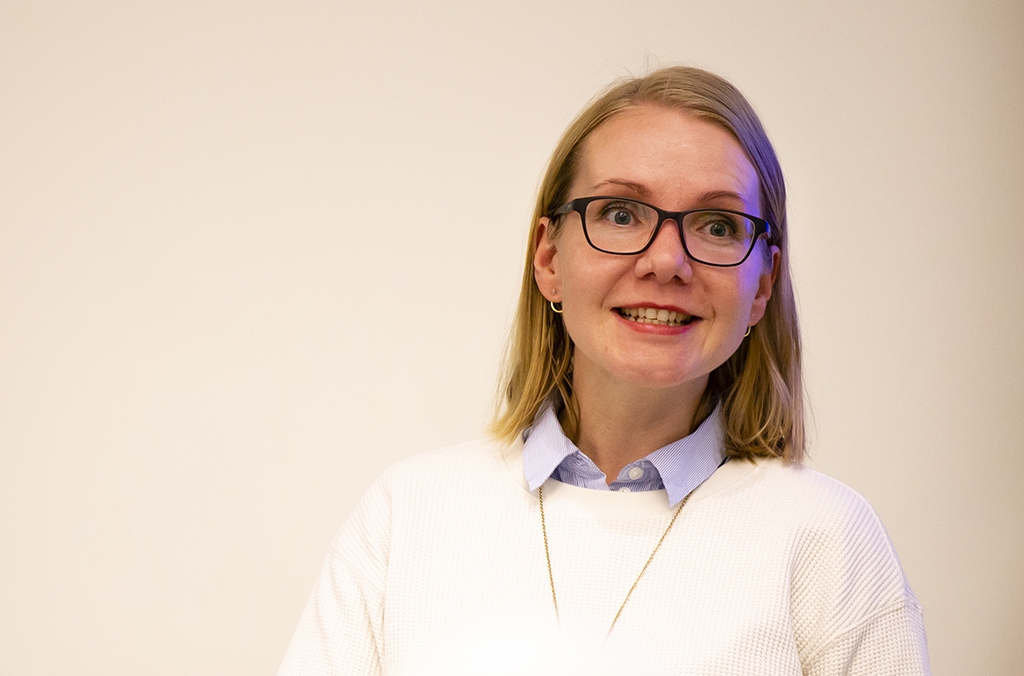Coordinating safety – Jona Gudjonsdottir helps scientists stay safe
To help researchers work safely and avoid making the same life threatening mistakes she has made in the lab, Jona Gudjonsdottir uses her lifelong experience from various laboratories in her role as Lab Safety Coordinator at SciLifeLab.
Before learning what Lab Safety Coordinator Jona Gudjonsdottir actually does for a living, for someone working at SciLifeLab Campus Solna she may very well appear as the person – other than your boss – writing emails telling you what to do.
“The chemical waste room in the basement smells terribly. Please make sure that your bottles are clean on the outside, the cap is screwed securely and the bottle is not broken when you leave your waste in the basement.
Kind regards,
Jona”
Getting to know her, you realize that – while that is certainly what she does – the list of tasks on her plate is a lot longer. As her title implies, she works with fire safety, chemical safety, biosafety, radiation safety and basically all other kinds of safety.
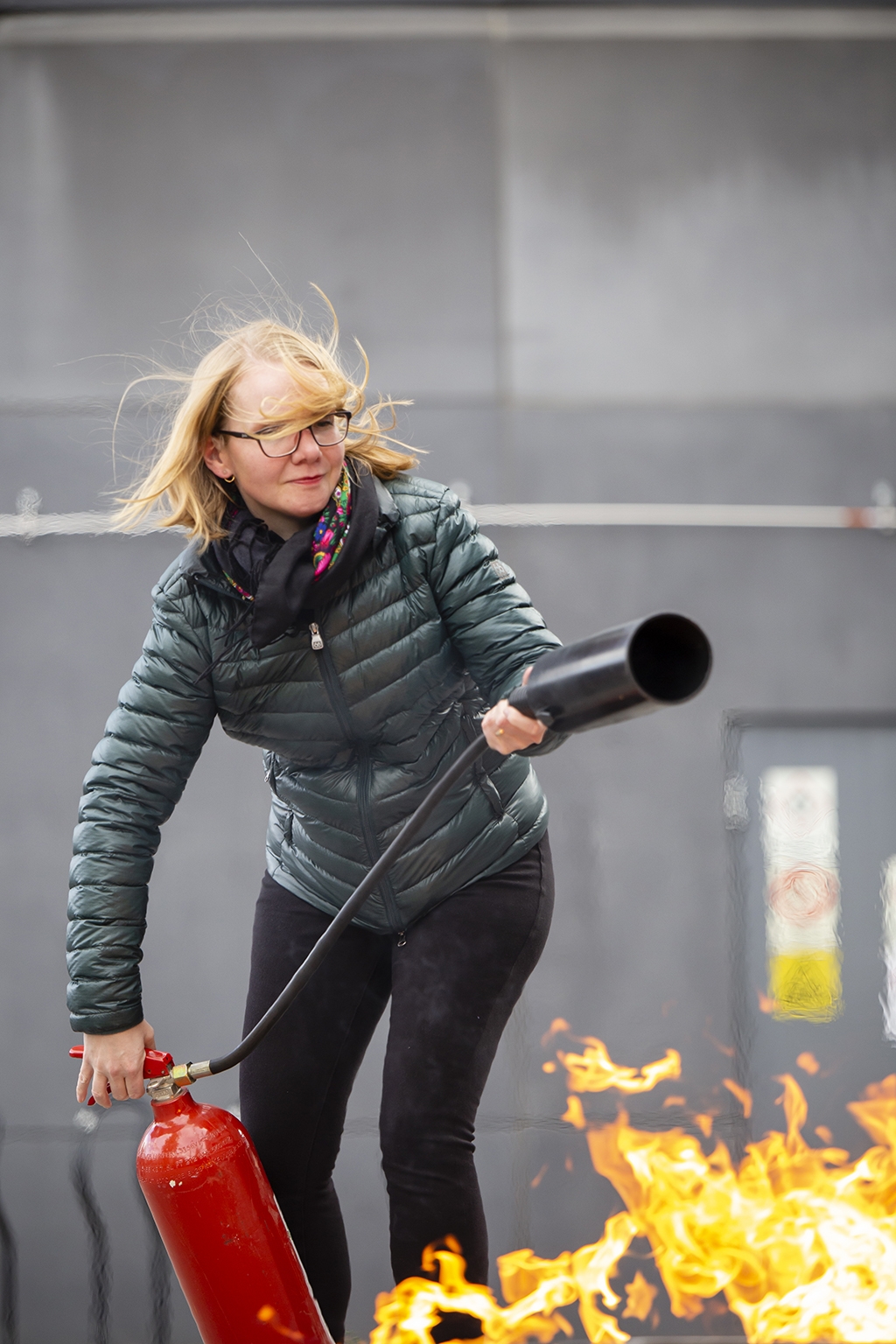
What is not as obvious is that she handles practically everything else that is remotely related. It’s her responsibility to make sure that all papers are in place – such as up-to-date hazardous materials permits for all labs; to write handbooks and policies that are in line with all policies of the SciLifeLab host universities; to arrange external education activities and to demonstrate proper procedures herself. Furthermore, if, for example, she deals with an incident involving chemicals and the person she is in contact with also needs other types of assistance, with psychosocial issues or what have you, Jona Gudjonsdottir handles it.
A lifetime in the lab
Years before even starting her studies in biomedicine, Jona Gudjonsdottir worked in a pathology lab in Iceland – where she continued throughout her studies. She has been employed by hospital- and university labs since 2001, with cancer research at Karolinska Institutet being her most recent occupation. She finds these experiences useful in her new role as Lab Safety Coordinator at SciLifeLab Campus Solna. She knows how hard it can be to follow some of the lab safety rules, and why they sometimes are broken. When they are, she understands the reality behind these decisions and can better level with Group Leaders.
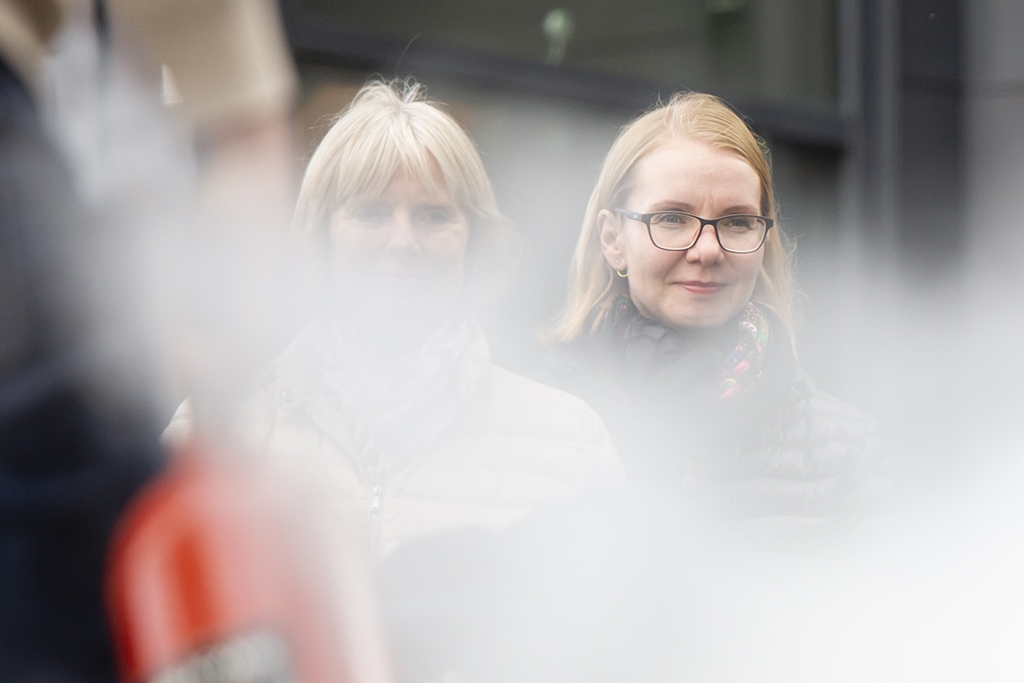
Being in a lab for basically all of her adult life has allowed Jona Gudjonsdottir to make a few mistakes. One is that she for years during her youth was exposed to a lot of formalin. This was considered fine at the time, but it is now classified as a carcinogenic, mutagenic and reprotoxic (CMR) substance – which, as the terms imply, is not great for you to inhale for days on end. This can barely count as a mistake, as it was not her fault, but it has made her seriously consider the risks of working in a lab.
Other mistakes – which with no doubt can count as such – includes wearing flip-flops while handling liquid nitrogen, something that resulted in cold toes, but could have been much worse; and sticking a needle in her finger while handling a tissue sample infected with hepatitis C.
“It turned out fine in the end, but it wasn’t a nice experience” says Jona Gudjonsdottir.
After the fact, she turned to safer methods for working with needles. She uses these and other missteps from her years in the lab in her current role when talking to researchers and tries to explain why both more and less understandable procedures need to be followed.
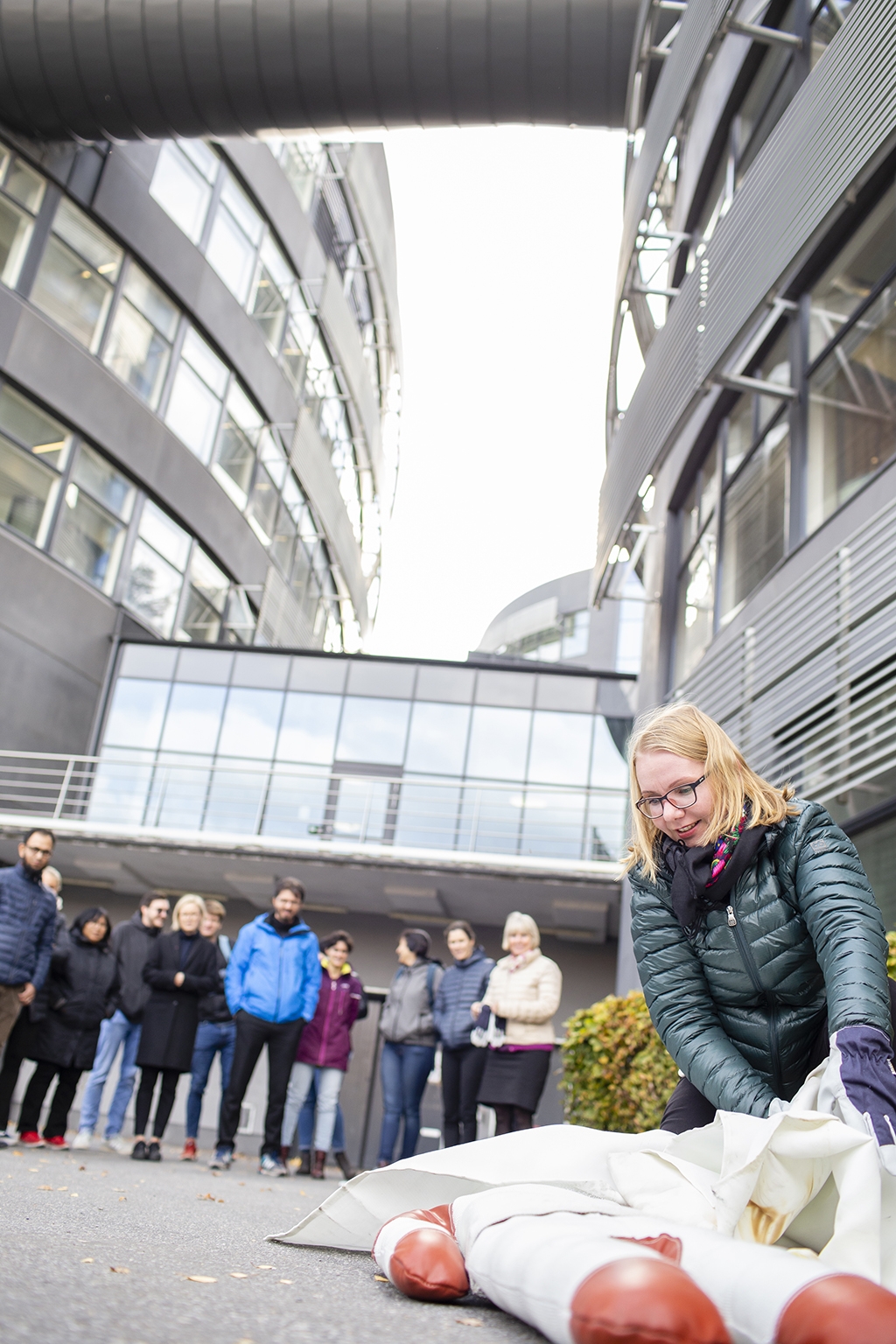
Moving to Sweden
Jona Gudjonsdottir has always been curious about new places and saw the opportunity to move to Sweden more as an adventure than anything else. If leaving tiny Iceland for six months in Southeast Asia was not an issue, why would moving to Sweden be? It turned out it was not, for the most part. She found that the culture and way of life in Sweden and Iceland had practically no difference – even if she missed her family, Icelandic sausages and candy. The Swedish language, of which she had no prior experience, was more difficult. While the written languages resemble each other, spoken Swedish was something completely different.
“I was so tired the first weeks, I came home from work and couldn’t think. But it was good being thrown in at the deep end, you learned quickly” says Jona Gudjonsdottir.
Now, a few years later, she can by all means be considered to speak fluent Swedish, but using what she calls diplomatic Swedish – having a more professional language – when emailing with for example authorities is still a struggle, she finds.
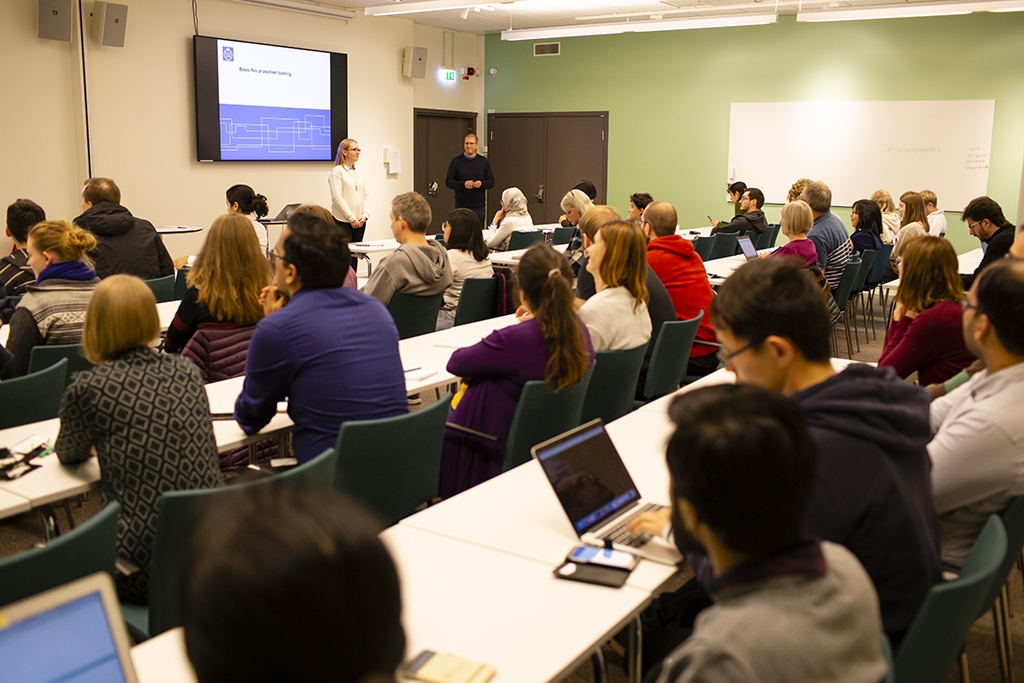
Lethal outcomes
The most common issue Jona Gudjonsdottir comes across in her day-to-day job is lack of knowledge when it comes to safety. People are often not aware of how to properly get rid of their waste, when to use lab coats or gloves, how to best store or handle chemicals and so on. She has a few times ‘caught’ researchers attempting to transport liquid nitrogen in small elevators.
“If you spill liquid nitrogen, it expands 684 times and oxygen levels can quickly drop below 18%. If you do this in a small confined space, you die. It’s not very likely that it happens, but if it does the consequences would be catastrophic” says Jona Gudjonsdottir.
So what should they have done instead? One option would have been to take the stairs, another to transport the liquid nitrogen alone in the elevator and meet it upstairs – and have a sign in the elevator explaining what is going on so others do not walk in and, well… die.
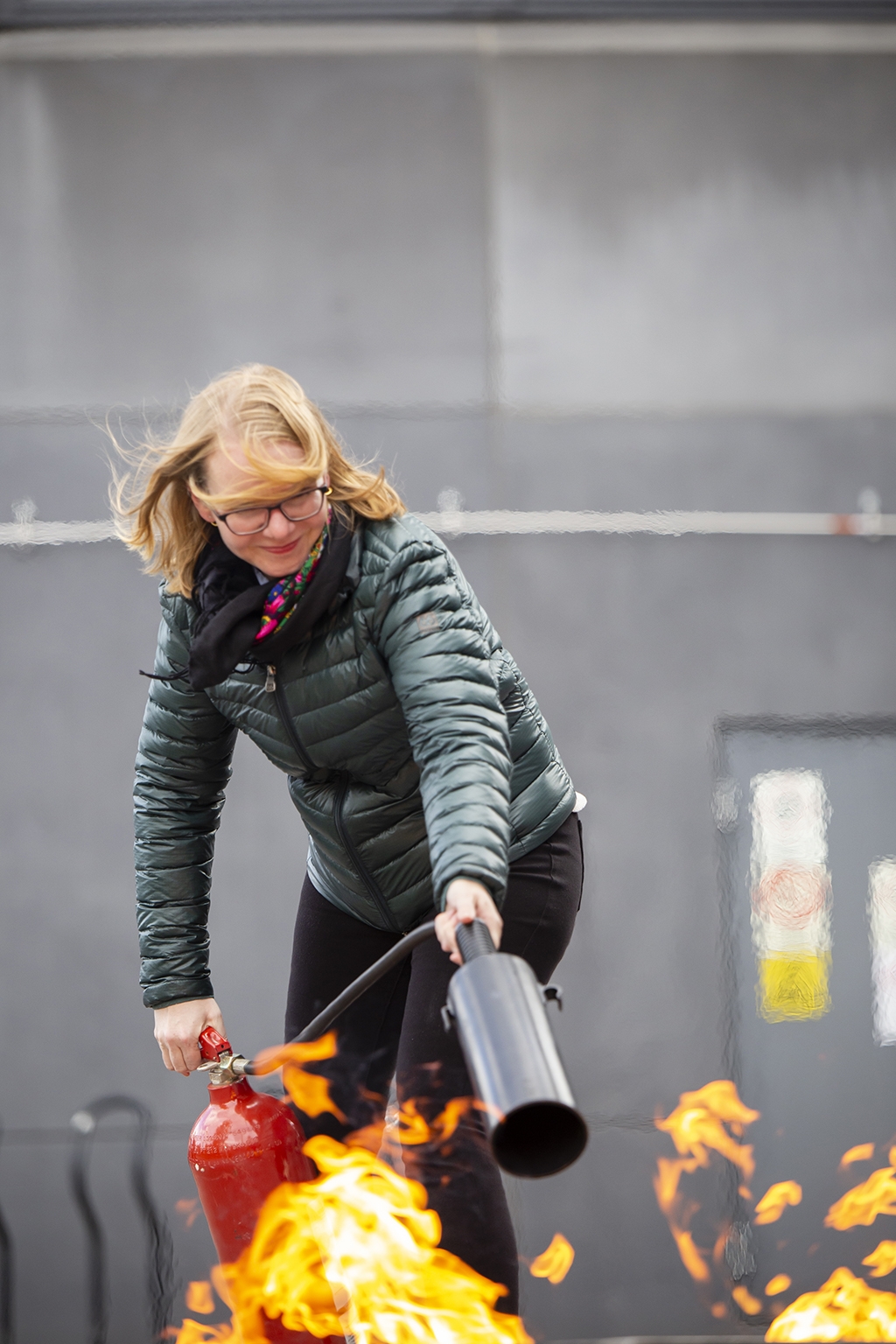
Not using lab coats or gloves as intended is another issue. They are both used to protect the user and whatever is being handled. Using gloves to prepare a sample and then touching a phone with the same gloves beats the purpose: the phone has been contaminated and may be a potential risk for the researcher – or the kids at home playing with the phone later. It may not be the most dangerous substance in the world, but it is not uncommon that it for example is corrosive. The gloves are also there to protect the sample from contamination. There is no use for the glove if it touches every surface the gloveless hand would have.
Lack of knowledge is not the only issue, however. As Jona Gudjonsdottir explains, lab culture can lead to safety measures not being taken even though the researchers know what to do. If no one else is wearing lab coats, it is not easy for a new member of the group to start wearing it, despite knowing the risks. This is one area where Jona Gudjonsdottir’s vast experience working in labs really comes in handy – she is able to understand the situation and level with researchers in a way she could not have done without working there herself. It is perhaps also this experience that encourages her to be strict when it comes to safety, even though some find certain procedures to be over the top.
“Sometimes it is unnecessary to throw away gloves as hazardous waste, but people make mistakes and by always throwing gloves in hazardous waste you decrease the risk of contamination when these mistakes are made” says Jona Gudjonsdottir.
Text & photo: Niklas Norberg Wirtén
